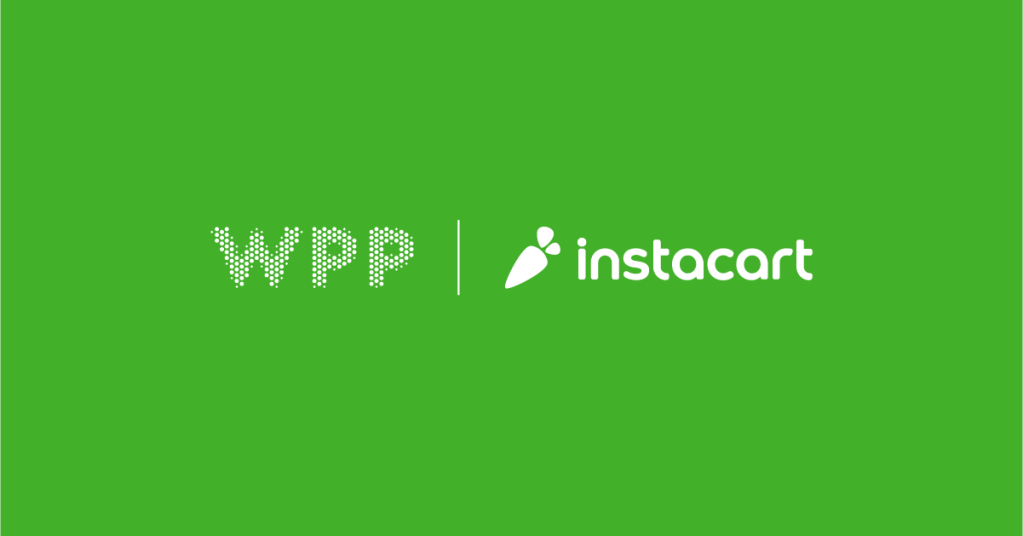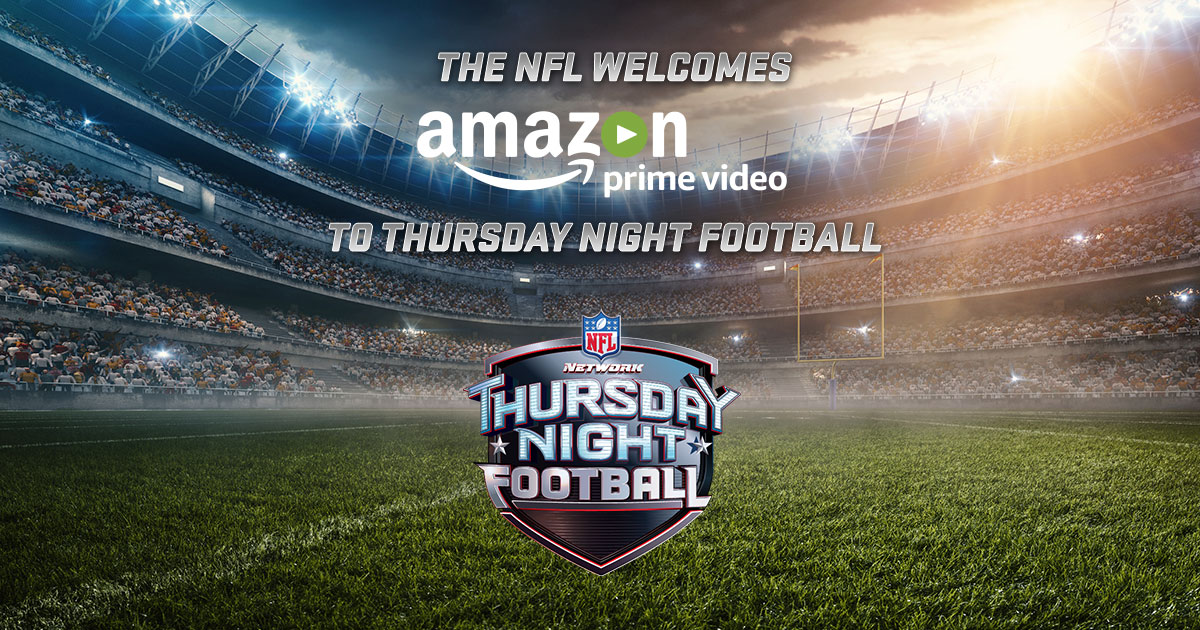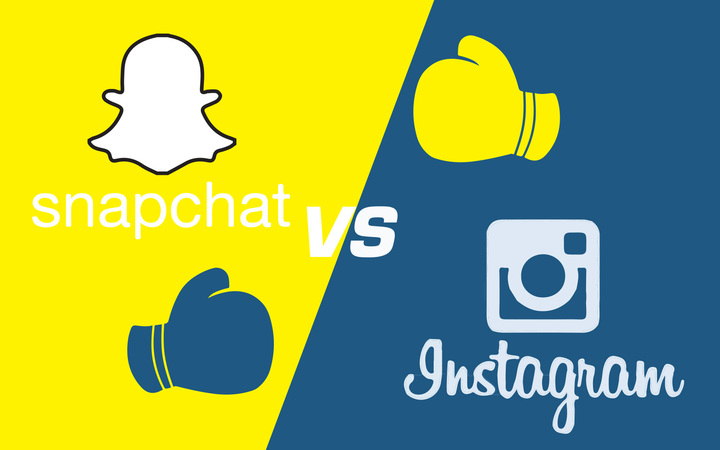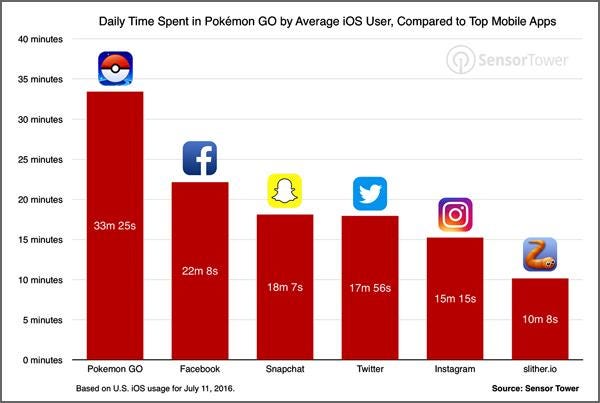WPP and Instacart partner to accelerate online grocery advertising for CPG brands
Our team has been working on this partnership for a while and we’re excited to share this great news this week. The retail media and last-mile landscape is an exciting place to be focused and there are so many great opportunities in this green field. And the value proposition for consumers will continue to get better and more exciting.

WPP press release below
WPP and Instacart, the leading online grocery platform in North America, today announced a new partnership offering advertising solutions and measurement tools for CPG brands. The first of its kind partnership will give WPP and its clients’ early insight into Instacart Ads product offerings and access to new tools and features on the platform.
With the largest footprint across the CPG category globally, WPP recognized the importance of building advanced retail and commerce capabilities early on. The partnership with Instacart Ads, which offers a robust suite of advertising products, reflects WPP’s commitment to lead the market by delivering advanced, end-to-end commerce solutions that allow brands to thrive in online environments.
As the inaugural Analytics API partner, WPP will gain access to a custom analytics API and data integration tool that enable WPP agencies to develop unique insights for clients, including basket analysis and lifetime value. The partnership will also include custom campaign measurement and management indexes to ensure clients can optimize spend and sustainable growth on the platform.
Additionally, the companies will co-develop the first Instacart Ads agency certification program designed to provide teams with an advanced level of proficiency across Instacart’s app and products. As part of this commitment, WPP and Instacart Ads will collaborate on the learning agenda and content, and WPP teams will gain access to the certification program before it is launched to the general market. WPP has committed to having 1,000 employees certified by the program within the first six months of launch.
Doug Chavez, Vice President of Strategic Partnerships at WPP, said: “The pandemic has rapidly transformed the way people shop and what they expect from brands online. This behavioral shift means we need to use cutting-edge advertising tools for brands who now need to connect and engage with their consumers across all channels. We are delighted that our new partnership with Instacart Ads will allow WPP agencies to deliver even more innovative solutions to clients that enhance the online grocery shopping experience.”
Ryan Mayward, Vice President of Sales at Instacart, said: “Instacart Ads is designed to support brands of all sizes, helping them access the opportunity to deeply engage with their customers online. We’re excited to partner with WPP to continue delivering that experience and together equip brands to succeed in the digital aisles with robust insights capabilities and educational resources.”
Adage also covered the news as well.

Amazon, NFL Partner To Stream Thursday Night Games; Adios, Twitter
Tim Cook once opined “The Future of TV is Apps” and those words were proudly displayed on a screen behind him when he introduced the updated Apple TV back in 2015. Just a week after the fourth-generation Apple TV went on sale, Apple commanded 31% of the streaming market, well ahead of Amazon and Roku, which at that time were the leaders. Two years on, we haven’t seen much new innovation from Apple TV but we have certainly seen a lot of content development, innovation and marketing and licensing leadership from Amazon.
This week Amazon and the National Football League (NFL) announced a licensing partnership for the 2017 season. Amazon will have the streaming rights to 10 Thursday night games during the Fall 2017 season. The deal is a switch from the NFL’s 2016 season partnership with Twitter. In 2016 Twitter and the NFL debuted their Thursday night streaming partnership with the N.Y. Jets vs. Buffalo game and reached 2.1 million people. Just as with the Twitter partnership last year, Thursday night games will be simulcast on network broadcast (CBS or NBC) and on cable via the NFL Network. That’s where the partnership similarities end.

Twitter streamed the games free of charge. Amazon will only make the Thursday night games available to Amazon Prime members. Amazon is said to have paid $50 million for the 10 games, whereas Twitter paid $10 million for their deal last year. Of course, Amazon has an existing streaming service whereas Twitter did not. Amazon also has a platform with all sorts of commerce opportunities, Alexa their AI assistant and, perhaps more importantly, millions of member profiles with credit cards on file. This partnership is rife with many more opportunities beyond the streaming games — the power of the Amazon platform.
Last year’s test with Twitter was another proof point that showed the NFL and the entertainment world that consumers are happy to get their sports content streamed across any device and it showed a snippet of possibility. At the time I wrote how Twitter was a great partner to drive engagement for their platform as fans could talk smack throughout the game with the close proximity of game/tweets. While that was great for driving higher active-user numbers for Twitter and growing their user base, there wasn’t any commerce connected. Amazon has the ability to drive equal engagement (sans tweeting in the interface) and, more importantly, more folks opting into Prime (NFL games, music, and free shipping …) and the biggest and e-commerce platform. For those reasons and only streaming to Prime customers are probably big contributors to the NFL doubling their asking price for the 10 games. Even without knowing all the details, this is big win for both Amazon and the NFL.
Where does this latest entertainment leave Apple TV? While I’m a big fan of Apple, I have to say this is yet another area where Apple has been outdone by a Seattle tech giant. In the last year, Amazon has continued to build out their entertainment business, adding more original content and winning their first ever Golden Globes. The future of TV may be apps but the content and the power of the platform behind the apps has to be creating better and more licensing deals that deliver more eyeballs and potential revenue upside. Apple seems to continually be outplayed — although they do have a shiny new company headquarters.
This new partnership with Amazon should be a great testing ground for Amazon partners looking to take advantage of the Amazon streaming sponsorship. Now is the time to start thinking about your commerce partnership with Amazon and how you can work your way into their advertising opportunities. And let’s not forget about testing ways to get your brand content into Alexa as a way to accompany all those information and service requests during Thursday night games. As marketers, our job is to ensure our brands and services are nimble enough to adapt and execute for this upcoming season and test several plays.
A Super Bowl Presidential Debate Audience And Twitter
“I don’t have any experience in running up a $4 trillion debt. I don’t have any experience in gridlock government, where nobody takes responsibility for anything and everybody blames everybody else.”
— Ross Perot at the 1992 presidential debate
Some of you reading this will remember the 1992 presidential debates with Bill Clinton, Ross Perot, and George H.W. Bush. Many thought Perot was a bit kooky with all of his charts and some of his one-liners. Oh, how Mr. Perot makes the current presidential cycle look tame. And that is about as close as I will get to making this month’s column a political missive. Instead, let’s talk about TV audiences, Sunday Night Football and Twitter.
A year ago, if I had predicted that the presidential debate would have a near Super Bowl-sized viewing audience, close to Super Bowl 50, many, if not all of you, would have laughed and made what would have seemed like a sure bet. In fact, according to Nielsen, the first presidential debate brought in 84 million viewers across 13 of the TV networks that carried it live. And that 84 million doesn’t include people who watched via numerous live streams online or at bars and restaurants. This means the actual total audience was even higher. Did I mention this was a presidential debate? For perspective, the last presidential debate between Obama and Romney in 2012 averaged 67 million viewers.
But what is amazing to me is that Twitter reported their live streams of the first two presidential debates had more viewers than the NFL games.
As many readers may know, Twitter recently began streaming select NFL games, starting with Thursday Night Football. During their first event (N.Y. Jets vs. Buffalo), Twitter’s live streams reached 2.1 million people. Football fans enjoy “smack talking” during games. Twitter knows tweets spike during games, so matching that insight with live-streaming NFL games seems a spot-on way to drive engagement on their platform. And Twitter could certainly use some higher engagement numbers. The first NFL game certainly was proof for their streaming experiment. I’m interested in seeing how Twitter’s live-streaming numbers continue during the rest of the NFL season. I would love to see them prove out this concept for the long haul and see it move into other live-events, such as the hockey, tennis, and award shows.
Twitter’s NFL live streams and now the presidential debates give them the proof they need to support their belief that Twitter can be a live-video delivery platform. While many in the industry may think the concept is a stretch and just another desperate advertising solution concept for Twitter’s weak monetization efforts, I have long believed they are the perfect platform to surround great content for passionate consumers during live events.
Are Twitter’s NFL streaming numbers huge by traditional TV standards? No. But we are still very early in their grand live-streaming experiment. Let’s give it some time and see how things go and where they innovate and iterate on the service. At a minimum, they have proved their live-streaming point.
The live-steam presidential debate numbers also point out that consumers have a thirst for content they are passionate about on non-traditional platforms. If Twitter can continue to identify passion-based content (e.g., music, sports, politics), I believe the audience will show up and engage. As marketers, we all know what happens when the audience shows up — advertising solutions follow. So, here is another chance for passion-based marketers (QSR, auto, etc.) to get in and test a still unproven area and get some great learning
One Small Step For iPhone, One Giant Leap For Mario
Every September Apple announces big product news. This September continued that tradition with the much-anticipated iPhone7 announcement. The new iPhone7, AirPods and the updated Apple Watch, were all very cool and great steps forward for Apple. What was huge news was that Nintendo’s Mario is finally coming to iOS.
While the news of Nintendo’s beloved Mario coming to the iOS world is medium-sized news for Apple, it is huge news for Nintendo. The fact that Nintendo’s legendary Shigeru Miyamoto appeared on stage at the event to announce was a very clear sign at how big and important this news is for the company.
As prologue: While many in the marketplace have been focused on the overwhelming success of Pokémon Go as a Nintendo windfall — it isn’t. Nintendo owns the IP but doesn’t make the Pokémon Go game, and it has produced very little revenue for Nintendo. Pokémon Go is collaboration between The Pokémon Company and Niantic Labs, the developer of the game. In fact, when the investors realized this, the sharp rise in Nintendo stock price saw an equal correction. In fact, Nintendo is in search for a big hit for the upcoming holiday season.
Nintendo has been slow to develop games for third-party platforms since they have historically made their own consoles and handheld devices. But that business has struggled for several seasons. Putting their most famous and beloved character on iOS is a huge step for Nintendo and I’m betting they have very big revenue forecasts tied to Super Mario Run for Holiday 2016.
If you watched the closing ceremony at the Sumer Olympics, it’s clear how popular Mario is around the world. And by putting Mario into the hands of millions of fans and, hopefully, new users around the world, the Mario franchise will see downloads and revenue stream the likes of which Pokémon Go experienced earlier this year. Even a fraction of Pokémon Go’s revenue numbers will be a success.
A key theme to recognize in both games is to understand the classic “fish where the fish are” strategy. By limiting their investment in a lagging console business and instead writing game software for a third-party platform, Nintendo has the chance to rescue their gaming business and un-chain themselves from their expensive proprietary device bondage. Also, it will be much easier for Nintendo to create commerce opportunities in an app environment as well as easily deliver updates and new adventures for Mario in a bit-based world.
Lastly, this is big news for Nintendo because Japanese companies are historically better at building “things” vs. software. Doubt that? How many Sony Walkmans do you see today? Software eats the world and has gobbled up the days of simply building a better mousetrap. If Nintendo’s Super Mario Run is a hit, this will signify a big transformation for Nintendo’s legacy as a game and hardware maker and transition to being software driven.
As marketers grapple with how to better engage with their customers, Nintendo may be a company to emulate and take some pages from their updated play book. Here’s looking to a great holiday season for that little dude in red overalls!
A manifesto for small teams doing important work
We are always under tight deadlines, because time is our most valuable asset.
If you make a promise, set a date. No date, no promise.
If you set a date, meet it.
If you can’t make a date, tell us early and often. Plan B well prepared is a better strategy than hope.
Clean up your own mess.
Clean up other people’s messes.
Overcommunicate.
Question premises and strategy.
Don’t question goodwill, effort or intent.
“I’ll know it when I see it,” is not a professional thing to say. Describing and discussing in the abstract is what we do.
Big projects are not nearly as important as scary commitments.
If what you’re working on right now doesn’t matter to the mission, help someone else with their work.
Make mistakes, own them, fix them, share the learning.
Cheap, reliable, public software might be boring, but it’s usually better. Because it’s cheap and reliable.
Yesterday’s hierarchy is not nearly as important as today’s project structure.
Lock in the things that must be locked in, leave the implementation loose until you figure out how it can get done.
Mostly, we do things that haven’t been done before, so don’t be surprised when you’re surprised.
Care more.
If an outsider can do it faster and cheaper than we can, don’t hesitate.
Always be seeking outside resources. A better rolodex is better, even if we don’t have rolodexes any more.
Talk to everyone as if they were your boss, your customer, the founder, your employee. It’s all the same.
It works because it’s personal.
cribbed from @sethgodin because it’s great and this is how I operate, too!
Goooal! What We Can Learn From The Most-watched Soccer Match In U.S. History
My latest article from Mediapost – Marketing:Entertainment
“Many people say I’m the best women’s soccer player in the world. I don’t think so. And because of that, someday I just might be.”
—Mia Hamm, 1999 U.S. Women’s World Cup Team
I like that quote from Mia Hamm, one of the standout players from the 1999 U.S. Women’s World Cup champion team. Mia’s quote reflects a consistent theme of how the current U.S. women’s soccer team approaches playing — on and off the field. And just one of the many reason they are champions, in a sea of doubters.
Sunday’s Women’s World Cup championship’s stunning 5-2 win over Japan was a trill to watch. I was streaming in from my car en route from Seattle to San Francisco. It set records on and off the field. By the numbers, more than 26 million viewers tuned in to watch the match. Viewership peaked at 30.1 million from 8:30 to 8:45. Carli Lloyd’s impressive hat trick during the game was matched in the broadcast world with three amazing goals; the match bested the recent NBA Final viewership (13.9 million), the NHL Stanley Cup Final (7.6 million) and becoming the most-watched soccer event in the U.S. television history. The icing on the cake, for Fox Sports Go app, was a record-setting 232,000 concurrent streams. Very impressive numbers, to be sure.
Given all the growth of U.S. youth soccer programs, especially girls leagues, women’s collegiate soccer, you would think the U.S. Women’s World Cup games would have been an attractive venue for marketers to reach their key audiences. Guess again.
Monday morning stats about the match should now silence the doubters about women’s sports being a big draw. Even the doubters should have seen this as an ideal entry point to test the waters with a minimal investment. So, I’m baffled that more marketers didn’t find ways to engage and reach what was certainly a key audience. Fox raked in an estimated $17 million on advertising revenue, a tiny number when you consider the $529 million ESPN made from advertising/sponsorship revenue from last year’s tournament in Brazil.
Granted, the men’s World Cup has been around longer. Fox aired 16 matches live (a new record for Women’s World Cup Soccer in the U.S.) and I counted ads from at least 15 brands, from QSR, auto, insurance, CPG and alcohol beverage companies. While there were more advertisers and revenue than in previous years, it was still a missed opportunity. Also puzzling was the noticeably absent traditional sports apparel brands that are typically sponsors. All day I dreamt about seeing them show up in the match somewhere. Hats off to non-traditional brands like Clorox and Tampax for stepping up. I think they will do well from their investment.
A lot of marketers rely on reports and historical data to help determine where to put their sponsorship dollars. Perhaps the brands that didn’t show up relied on these reports too much vs. considering market conditions, and the hyper growth of women’s soccer (even girls youth leagues). I’m guessing the reports suggested sticking with proven sports franchises for proven returns. Data is a great tool but it’s not the only one in the toolbox.
There have always been a lot of doubters about women’s sports, including the high-performance world of Women’s World Cup. And nearly every time, the women have something to prove and they do. Hopefully, this year was a wake-up call for brands that have been on the sidelines. As marketers, our goal is to connect with audiences in meaningful ways. The highly passionate women’s sports fans offer a great opportunity for many marketers to connect and tell their story in a meaningful way. How will you find a way to engage with this audience? I would love to hear your thoughts, feel free to comment on this article or find me @dougchavez on Twitter.




